Chalazion & Stye
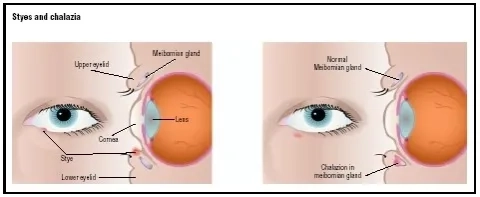
A chalazion is a small, usually painless, lump or swelling that appears on your eyelid. A blocked meibomian or oil gland causes this condition. It can develop on the upper or lower eyelid, and may disappear without treatment.
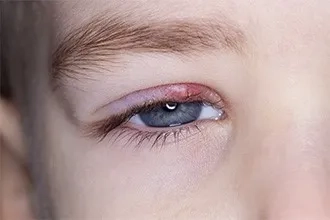
A chalazion is sometimes confused with an internal or external stye (also called a hordeolum) usually caused by bacterial infection. An internal stye is an infection of a meibomian gland whereas an external stye is an infection in the area of the eyelash follicle and sweat gland. Unlike a chalazion, a stye is usually painful and may develop into a chalazion occasionally.
What is the difference between a chalazion and a stye?
Sometimes it can be difficult to tell the difference between a chalazion and a stye.
A chalazion can develop and you might not see any symptoms. When there are symptoms, they can include:
- a bump on the eyelid, sometimes becoming red, swollen and can be tender occasionally.
- rarely that it will be an entire swollen eyelid
- blurry vision, if the chalazion is large enough to press on the eyeball
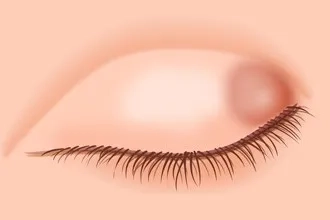
Symptoms of stye can include:
- a very painful red bump along the edge of the eyelid at the base of the eyelashes and it may cause the entire eyelid to swell
- usually a small pus spot at the centre of the bump
- grittiness, sandy and scratchy feeling in the eye
- photophobia, being sensitive to light
- blepharitis, crustiness along the eyelid margin
- tearing in that eye
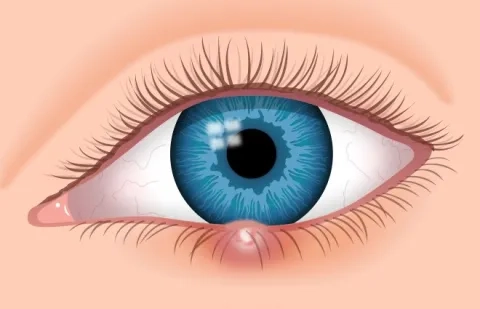
How do I treat a chalazion or stye?
- Warm compresses
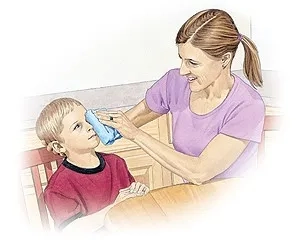
For both chalazion and stye, warm compress helps the clogged gland to open and drain. It will also help the gland to clear itself by gently massaging around the area with clean fingers.
- Steroid shots
If the chalazion is very swollen, your ophthalmologist may need to give you a corticosteroid injection to reduce the swelling.
- Antibiotics
Ophthalmologist may prescribe antibiotic for an infected stye.
- Surgery
If the chalazion or stye affects vision or does not go away, you may need to have it drained. This surgical procedure is usually done in the doctor’s office using local anaesthesia.
Generally, both a chalazion or stye can heal on its own without any treatment. Do not squeeze and pop a chalazion or stye as it is possible to spread the infection to the eyelid. As these infections are contagious, proper eyelid hygiene is advised. Always wash hands before and after touching your eyes and avoid the sharing of towels and pillows.
When there are repeated episodes of chalazion or stye that keeps recurring, the ophthalmologist may request to do a biopsy to check if there is a more serious eye problem.
References:
- https://www.healthline.com/health/chalazion#overview1
- https://www.aao.org/eye-health/diseases/chalazion-stye-symptoms
- http://www.allaboutvision.com/conditions/chalazion.htm
- http://www.allaboutvision.com/conditions/styes.htm
- http://www.healthofchildren.com/S/Styes-and-Chalazia.html
- https://www.pinnaclehealth.org/wellness-library/blog-and-staywell/health-resources/article/22640
Recent Blog Posts
- 19 Oct 2022
- 19 Oct 2022
- 19 Oct 2022
- 19 Oct 2022
- 19 Oct 2022
